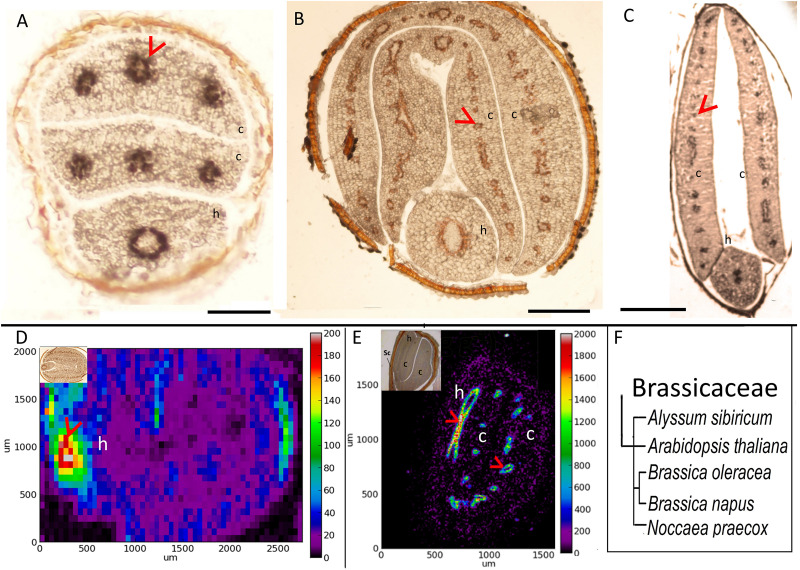FIGURE 1.
Fe accumulates in the endodermis of Brassicaceae family. (A–C) Perls/DAB-stained seed cross sections. Cross sections were stained with Perls/DAB and observed under light microscope. From left to right: Arabidopsis thaliana, Brassica oleracea, and Alyssum sibiricum. Brown regions surrounding the embryos are seed coats. These were already brown before the staining; thus, the color does not reflect the stained Fe. Fe appeared as black stains in panels (A) and (C), and brown in panel (B). Circular-shaped staining in Arabidopsis thaliana corresponds to the endodermal cells surrounding the provascular strands. (D,E) Synchrotron X-Ray fluorescence images of relative Fe distribution in the seeds. (D) Brassica napus and (E) Noccaea praecox. (F) Branch of the taxonomic tree, for the whole tree refer to Figure 8. This branch shows species that were examined for Fe reserves in Brassicaceae family and used as a visual aid. Note that Arabidopsis thaliana, Alyssum sibiricum, and Noccaea praecox, consist of a single pair of cotyledons, but both Brassica napus and Brassica oleracea consist of a pair of inner and an outer cotyledons. Bar represents 0.1 mm in panel (A), 0.5 mm in panels (B,C). c, cotyledon; h, hypocotyl. Red arrow heads point to examples of specific Fe accumulation pattern, closed rings around provasculature of cotyledons (A–C,E), and hypocotyl (D).

